Welcome to our comprehensive guide on Asian Fish for Aquariums. Drawing from years of personal experience in the aquarist community, I’ve curated this showcase to enlighten both novice and seasoned aquarium enthusiasts about the diverse world of Asian aquatic species.
In this article, you’ll be introduced to an array of fish originating from the vibrant waters of Asia, each with their unique qualities and requirements for care. From the serene beauty of the Japanese Koi to the dynamic energy of the Chinese Hillstream Loach, I’ll guide you through understanding their habitats, dietary needs, and how they interact with other species in a community tank setting.
My aim is to not only share my knowledge but also to instill a sense of wonder and responsibility towards these fascinating creatures, ensuring your aquarium thrives with diversity and harmony.
Key Takeaways
Based on my personal experiences and the insights I’ve shared above, here are some essential takeaways for anyone considering or currently keeping Asian fish in their aquarium:
- Research is Paramount: Before introducing any new species to your aquarium, thorough research is crucial. Understanding their specific needs, behaviors, and compatibility with other species will set the foundation for a harmonious aquatic community.
- Consider the Entire Lifespan: When choosing your fish, think about their full-grown size and potential lifespan. Your commitment should match their expected lifespan to ensure they live out their days in a comfortable and suitable environment.
- Create a Balanced Ecosystem: Strive to mimic the natural habitats of your fish by selecting a mix of species that occupy different levels of your aquarium. This approach not only adds to the aesthetic appeal but promotes a peaceful and stress-free environment for your aquatic community.
- Monitor and Manage Aggression: Always be vigilant about aggression and territorial behavior in your aquarium. Introducing species that are known to be peaceful and making sure there’s ample space and hiding places can mitigate stress and conflicts among tankmates.
- Special Needs Require Special Attention: Acknowledge and cater to the unique needs of certain species. Whether it’s breeding conditions, dietary preferences, or environmental requirements, paying attention to these details is key to ensuring the well-being of your Asian fish.
- Patience and Commitment Are Your Best Tools: Successful fish keeping is not about instant gratification. It requires patience, dedication, and an ongoing commitment to learning and adapting. The rewards of cultivating a thriving aquarium, however, are immeasurable and profoundly satisfying.
Popular Asian Fish for Aquariums
In my years as an aquarist, I’ve had the pleasure of keeping and observing a variety of Asian fish species in my aquariums. Their uniqueness in behavior, color, and care requirements amaze me every time. Here, I’ll share insights on some popular and captivating species that could be a vibrant addition to your tank.
Pearl Gourami (Trichopodus leerii)
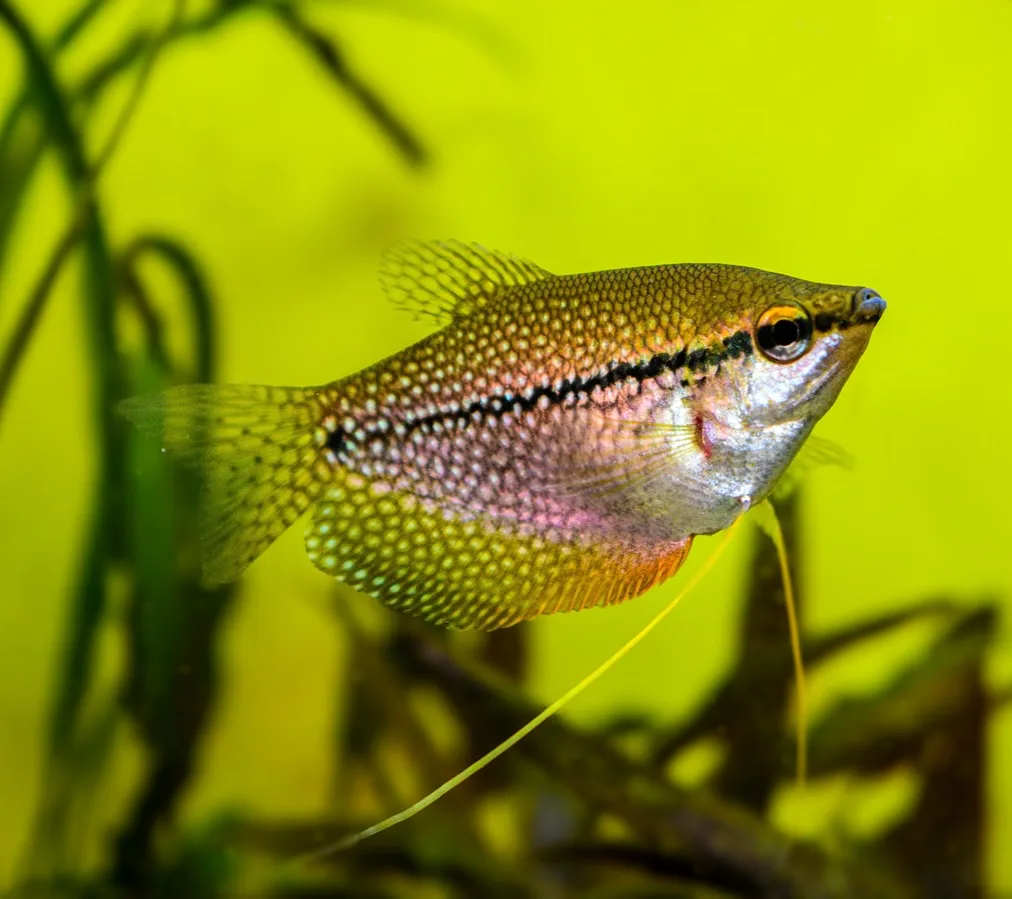
Source: @chaquaticpets
The Pearl Gourami is a sight to behold, with its shimmering body dotted with pearl-like spots and delicate, trailing fins. They are surprisingly peaceful and can add a touch of elegance to any community aquarium. From my experience, they thrive in well-planted tanks with plenty of hiding spots.
Siamese Fighting Fish (Betta splendens)
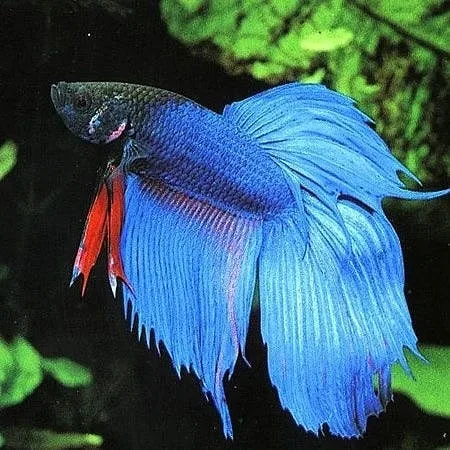
Source: @siamese_fighting_fish_
No aquarium species showcase could be complete without the striking Siamese Fighting Fish. Known for their vivid colors and dramatic fins, Bettas are solitary but magnificent. They require specific care to prevent aggression but are adaptable and relatively easy to maintain.
Harlequin Rasbora (Trigonostigma heteromorpha)
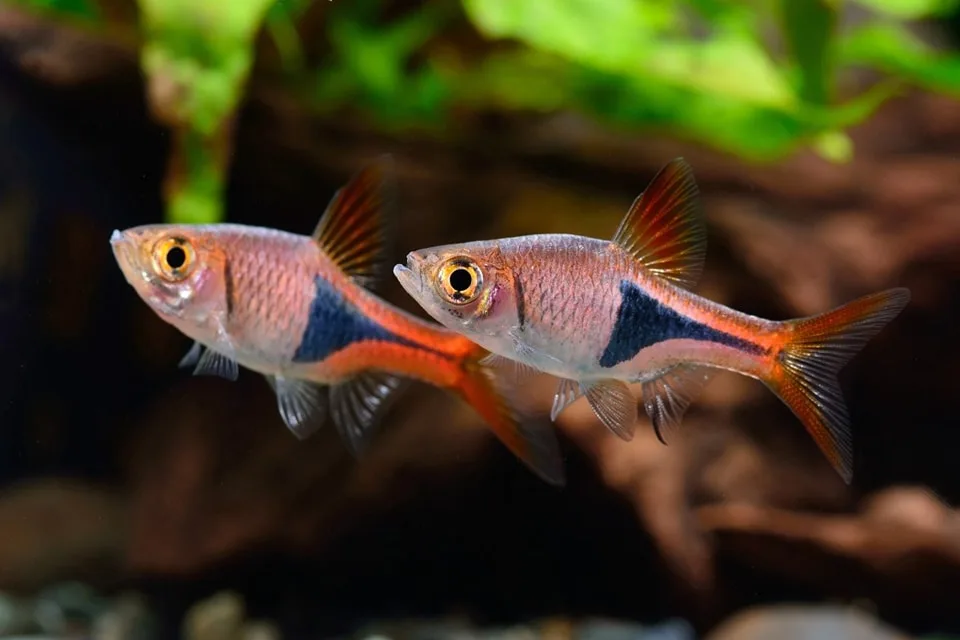
Source: @vivarium_mnl
The Harlequin Rasbora, with its orange body and distinctive black ‘harlequin’ patch, is a peaceful schooling fish that adds movement and color to any tank. They thrive in groups and are best enjoyed in a well-planted aquarium where their colors truly stand out against the greenery.
Cherry Barb (Puntius titteya)
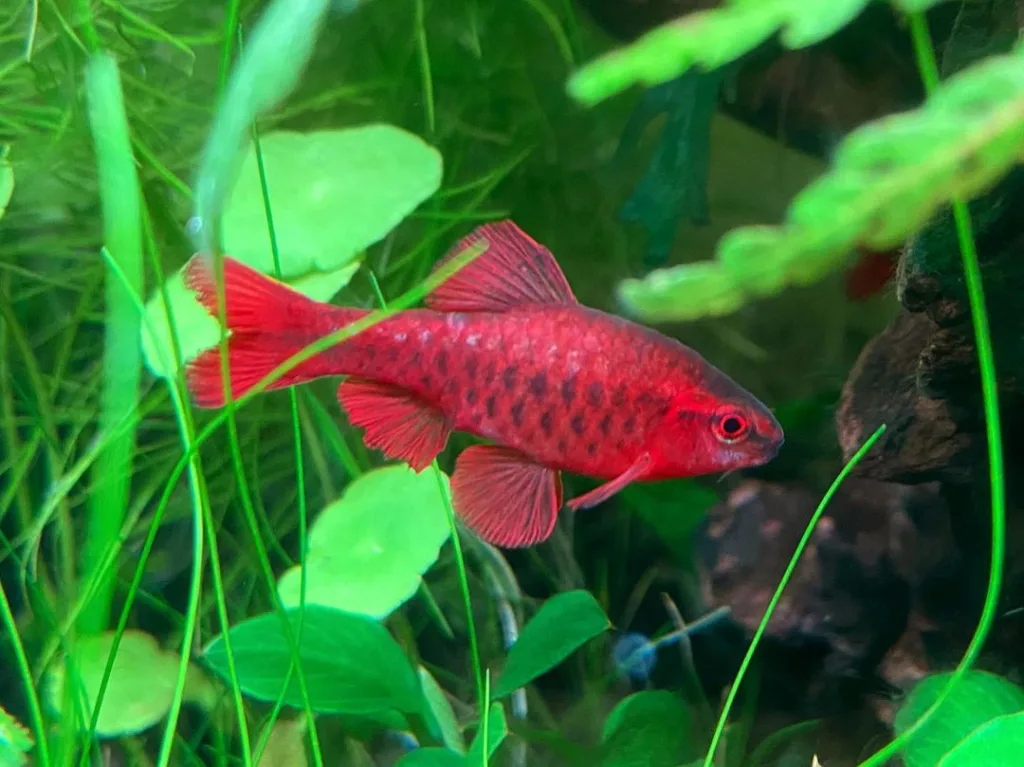
Source: @a_ice23
Cherry Barbs are hardy and vibrant, marked by their rich, red coloration. They’re peaceful, making them excellent inhabitants for community tanks. Watching a school of Cherry Barbs dart through the water, especially in a planted tank, is truly a delight.
Asian Stone Catfish (Hara jerdoni)
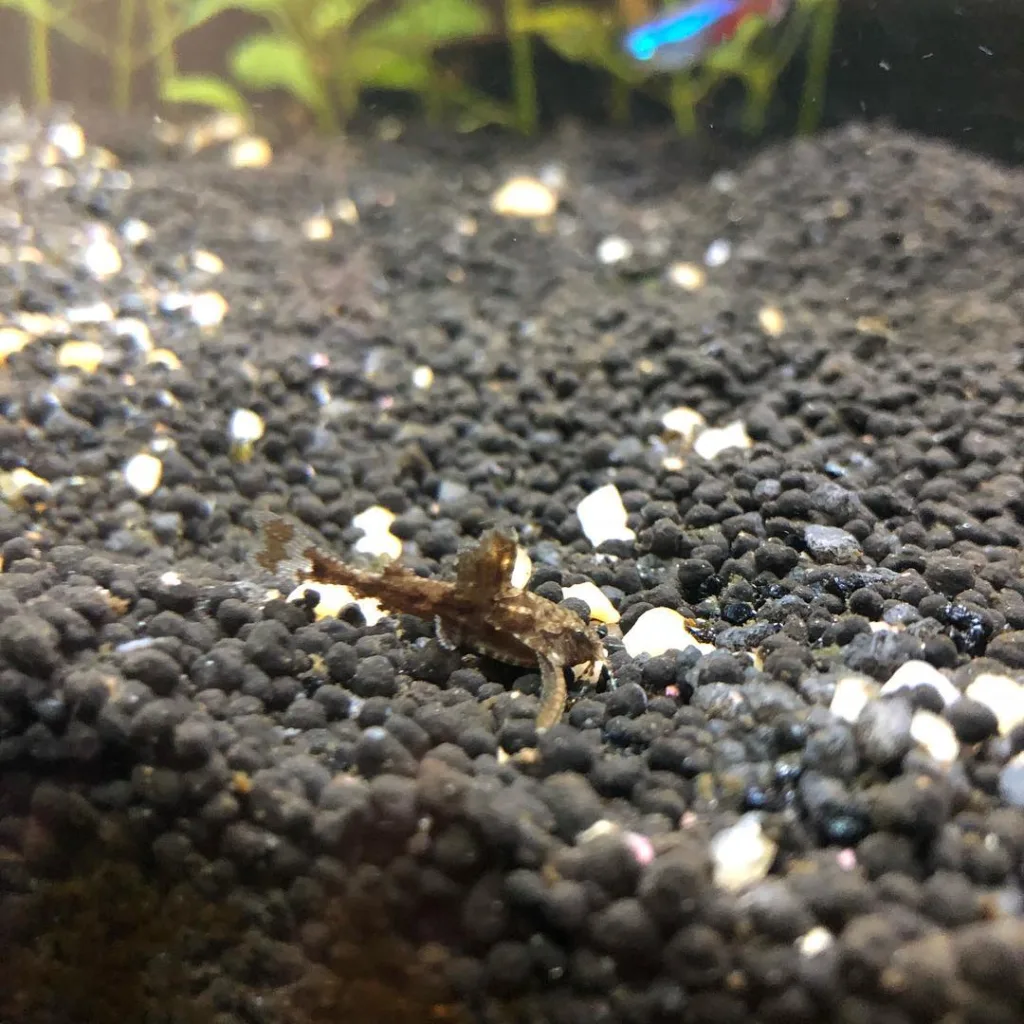
Source: @blazinhawkz
The Asian Stone Catfish is perfect for those who appreciate the allure of more diminutive species. They are intriguing for their ability to blend into pebbly backgrounds, almost invisible until you spot their delicate movements. They’re peaceful, nocturnal, and a unique addition.
Dwarf Gourami (Trichogaster lalius)

Source: @_aquavilla_
The Dwarf Gourami is another favorite of mine for its splendid colors and peaceful demeanor. Suitable for smaller tanks, these fish bring a calm and serene presence. They possess a certain gentleness that can soften any aquarium scene.
Celestial Pearl Danio (Danio margaritatus)
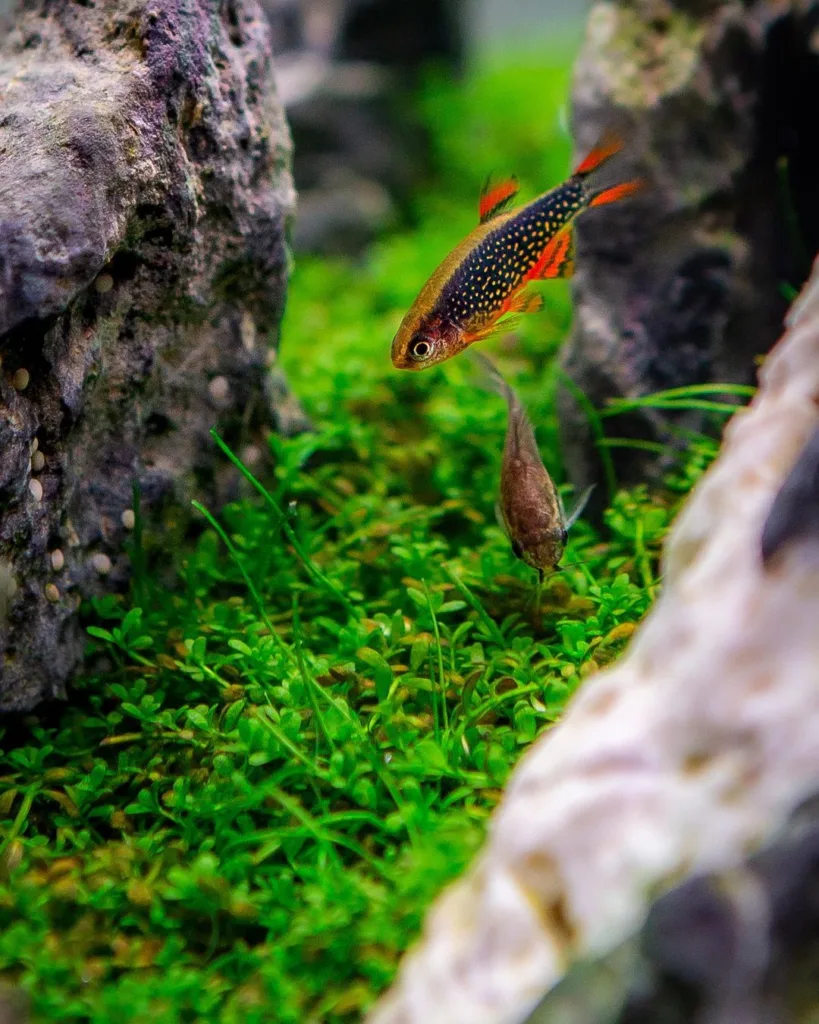
Source: @aquatechbetta
This small but strikingly beautiful fish, also known as ‘Galaxy Rasbora’, adds a sparkle to any aquarium. Their celestial patterning and playful demeanor make them a joy to watch. They thrive in groups and are a testament to the beauty found in smaller fish species.
Asian Glass Catfish (Kryptopterus vitreolus)
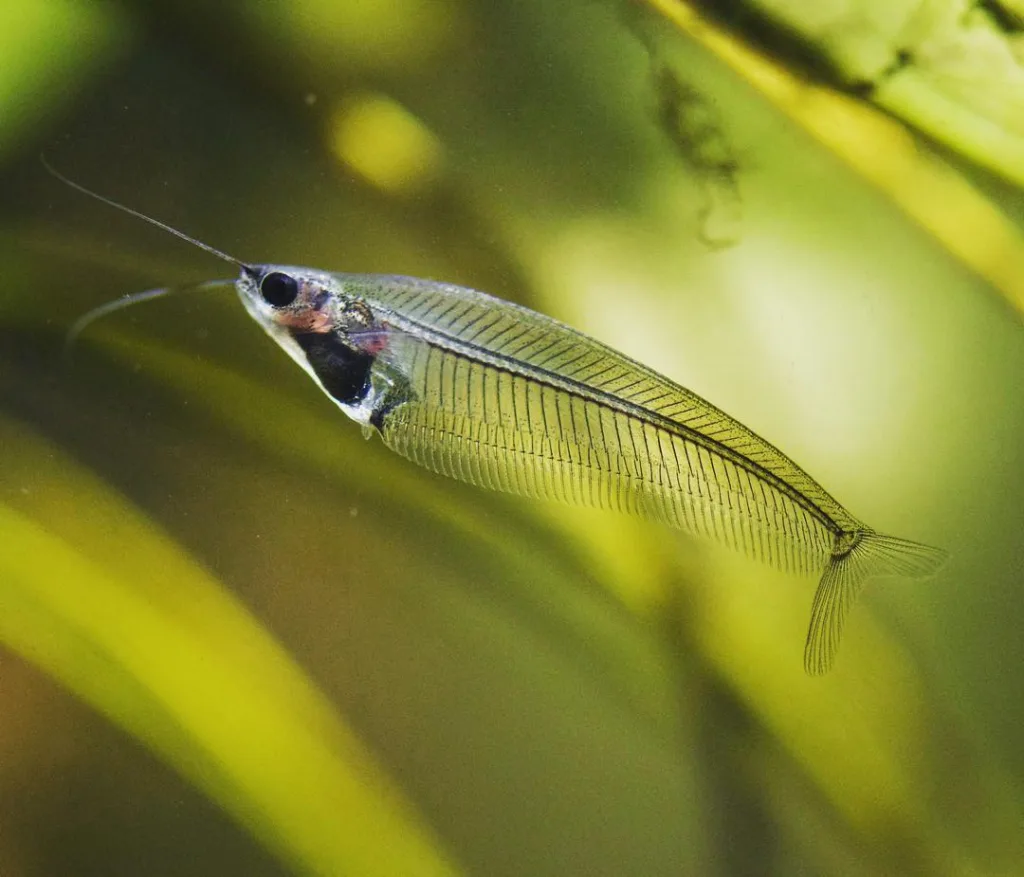
Source: @biotopiatai
The Asian Glass Catfish is utterly fascinating, with its almost completely transparent body. Observing their internal workings is captivating, and they add an element of intrigue to the tank. They’re peaceful and prefer to be kept in small groups.
Indian Dwarf Puffer (Carinotetraodon travancoricus)

Source: @jacwo2
Tiny yet full of personality, the Indian Dwarf Puffer is a unique choice. They demand attention with their active hunting and curious nature. Be mindful of their specific dietary needs and temperament, but they can be rewarding to keep.
Paradise Fish (Macropodus opercularis)
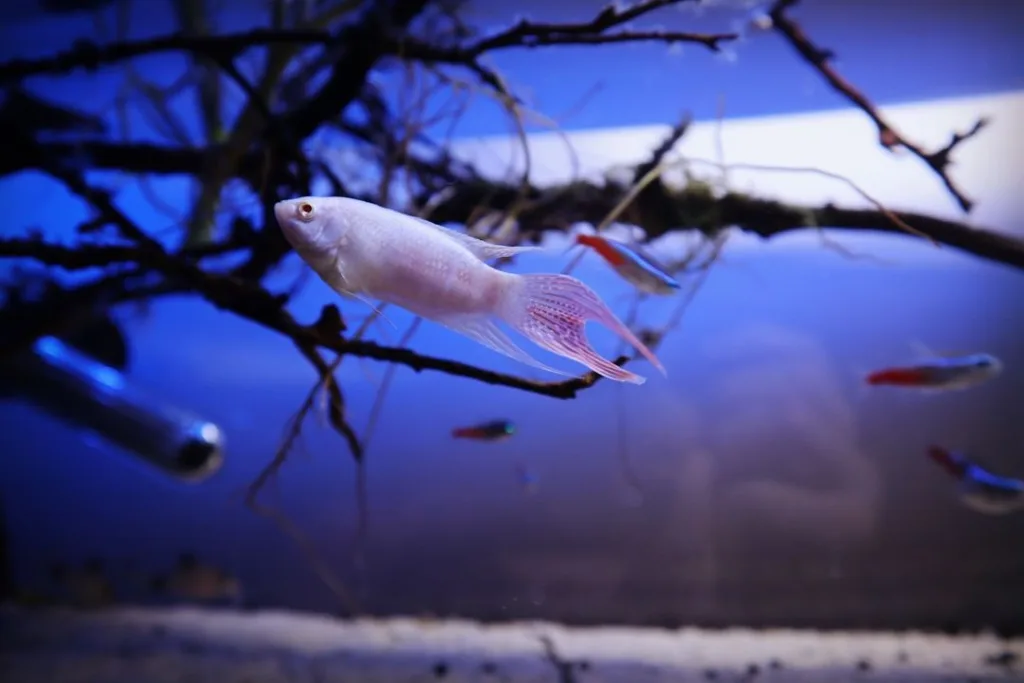
Source: @fishkeeping_amateur
Rounding out our showcase is the Paradise Fish, known for its beautiful finnage and vibrant coloration. They are hardy and adaptable but can be territorial. With proper tank mates and care, they make a stunning, lively addition to your aquatic family.
Characteristics and Behavior of Asian Aquarium Fish
Drawing extensively from my aquarist voyage, I’ve observed firsthand the wide spectrum of characteristics and behaviors that Asian aquarium fish exhibit. Each species brings its unique palette and behavior to the aquatic tableau, underlining the importance of understanding these facets for a harmonious aquarium life.
Coloration and Size Variation Among Species
The coloration and size among Asian fish species vary dramatically, offering an array of choices for every aquarist. For instance, the vibrancy of the Betta’s hues contrasts sharply with the subtle, almost mystical appearance of the Asian Glass Catfish. On the size spectrum, while the stately Japanese Koi can grow to be quite large, demanding spacious ponds, the diminutive Celestial Pearl Danio is perfectly content in smaller aquariums. These variances are essential to consider not only for aesthetic harmony but also for ensuring all inhabitants have adequate space to thrive.
Compatibility with Other Tankmates
Compatibility is key for maintaining a peaceful aquarium environment. Through my experiences, I’ve learned that while species like the Pearl Gourami and Harlequin Rasbora tend to be peaceful and do well in community tanks, others, such as the Paradise Fish, may exhibit territorial behaviors. It’s crucial to research and understand each species’ temperament and social compatibility to prevent aggression and stress in your aquarium.
Behavioral Traits and Tank Requirements
Acknowledging and accommodating the unique behavioral traits and tank requirements of Asian fish is the foundation of a healthy aquarium. The fascinating night-time activity of the Asian Stone Catfish underscores the need for a tank setup that mimics their natural habitat, replete with hiding places. Likewise, the active hunting behavior of the Indian Dwarf Puffer highlights their need for a diet rich in variety and spaces to explore. Understanding these needs is crucial for their well-being and your success as an aquarist.
Dietary Preferences and Nutrition
My experience also emphasizes the importance of species-specific dietary consideration. The dietary needs can range from the algae-dependent diet of the Chinese Hillstream Loach to the carnivorous appetite of the Betta. Tailoring your feeding practices to meet these needs is not just about nutrition but also about encouraging natural foraging behaviors, contributing to both physical health and mental stimulation of the fish.
Breeding and Reproductive Behaviors
Finally, breeding and reproductive behaviors present another fascinating aspect of keeping Asian aquarium fish. Some species, like the Siamese Fighting Fish, display elaborate mating rituals and require special care to breed successfully in captivity. Meanwhile, others may breed more readily, but understanding and managing their reproductive habits are critical to control population growth and ensure the well-being of all tank inhabitants.
Housing and Tank Setup for Asian Fish Species
Through the lens of my personal experience in fishkeeping, I’ve learned that setting up the right environment is paramount for the health and happiness of Asian fish species. Here I’ll share some insights on how to create an optimal habitat for these beautiful creatures.
Tank Size and Configuration Considerations
Selecting the correct tank size and configuration is the first crucial step. In my experience, it’s always better to err on the side of larger tanks; more water volume provides a more stable environment and gives fish more space to exhibit natural behaviors. For community tanks with small, peaceful species like the Celestial Pearl Danio or Harlequin Rasbora, a minimum of 20 gallons is a good start. However, for larger or more territorial species such as the Paradise Fish, consider starting with a 30-gallon tank or larger to ensure there’s ample space for all inhabitants.
Water Parameters: pH, Temperature, and Hardness
Water parameters are vital for the well-being of your fish. Most Asian fish thrive in slightly acidic to neutral pH levels (6.5-7.5), with temperatures ranging between 74°F to 80°F (23°C to 27°C). Water hardness should also be considered; softer water is preferred for many of these species. I recommend investing in a reliable water testing kit and monitoring the tank’s conditions regularly, adjusting as necessary to mimic their natural habitat as closely as possible.
Aquascaping Ideas for Asian-Themed Aquariums
Aquascaping an Asian-themed aquarium can be both fun and rewarding. Utilizing live plants such as Java Fern, Anubias, and Cryptocorynes can create lush landscapes that not only look stunning but also help maintain water quality. Incorporating elements such as driftwood, bamboo, and smooth rocks can replicate the natural environments these species come from. I’ve found that creating distinct areas within the tank, with open swimming spaces and more densely planted retreats, encourages a range of behaviors and enhances the overall wellbeing of the fish.
Filtration and Aeration Systems
It’s crucial not to overlook the importance of an efficient filtration and aeration system. Asian fish species, especially those from flowing streams, appreciate well-oxygenated water. An effective filtration system keeps the water clean and free from harmful toxins, while an aeration system ensures adequate oxygen levels. In my setup, I prefer using a canister filter for larger tanks, as they are potent and customizable, along with an air pump connected to air stones or a sponge filter for additional oxygenation.
Lighting and Its Effects on Fish and Plant Health
Lighting plays a significant role not just in aesthetics but also in promoting plant growth and mimicking natural day-night cycles for fish. While bright lights can encourage plant growth, some species of fish prefer dimmer environments. Using adjustable LED lights, I’ve been able to simulate sunrise and sunset, creating a more natural and less stressful environment for my aquatic inhabitants. Remember, the right balance is key for the health of both your plants and fish.
Feeding and Diet for Asian Aquarium Fish
My experiences with Asian aquarium fish have taught me that understanding and replicating their natural diet and feeding habits is crucial for their health and wellbeing. Here, I’ll share insights on how to properly feed these magnificent creatures.
Natural Diet and Feeding Habits in the Wild
In their native habitats, Asian fish species have diverse diets. For instance, the Indian Dwarf Puffer feeds on small invertebrates and sometimes algae, while the Chinese Hillstream Loach grazes on biofilm on rocks. Observing these natural feeding behaviors has guided me to provide a diet that mimics these natural preferences as closely as possible.
Offering a Balanced Diet in Captivity
Achieving a balanced diet in captivity involves variety. My approach includes a mix of dry, frozen, and live foods. For species like Betta and Paradise Fish, which are carnivorous, I ensure they receive enough protein through live or frozen brine shrimp and bloodworms. Herbivorous species benefit from spirulina flakes and blanched vegetables. It’s all about mimicking their natural diet to ensure they receive the necessary nutrients.
Feeding Frequency and Portion Sizes for Optimal Health
Moderation is key in feeding. Overfeeding can lead to water quality issues and health problems for the fish. Typically, I feed adult fish twice a day, providing only as much food as they can consume in two to three minutes. For fry (baby fish), more frequent feedings of smaller quantities are crucial due to their faster metabolism and growth needs.
Special Dietary Supplements and Treats
To further enhance the nutrition and health of my Asian fish, I occasionally incorporate dietary supplements such as vitamins and minerals into their diet. Additionally, offering treats like live daphnia or mosquito larvae not only serves as an excellent source of nutrition but also provides enrichment, stimulating their natural hunting instincts.
Addressing Specific Nutritional Needs and Challenges
Certain species present unique nutritional challenges. For example, the Indian Dwarf Puffer is notorious for its need to consume hard-shelled foods to maintain beak health. To accommodate this, I include snails in their diet regularly. Understanding and catering to these specific needs is paramount for their long-term health and happiness.
Implementing Varied and Seasonal Feeding Strategies
Adapting the feeding regimen to reflect the seasonal changes encountered in the wild has proven highly beneficial for the health and vitality of my Asian aquarium fish.
Simulating Seasonal Diets
In the wild, the availability of food sources for fish fluctuates with the seasons, which naturally alters their diet throughout the year. To simulate this, I adjust the types and quantities of food offered. During what would be the rainy season in their native habitats, I increase live foods, simulating the abundance of insects and larva. Conversely, in the drier seasons, I reduce feeding frequency and focus on plant-based foods.
The Importance of Fasting Periods
Incorporating fasting periods into the feeding schedule has been another insightful practice. Mimicking times of scarcity in the wild, brief fasting helps in regulating the digestive systems of the fish, promoting healthier metabolism and reducing the risk of obesity and related issues. One day every two weeks without food has shown no adverse effects on the fish, instead contributing to their overall wellbeing.
Observing and Adjusting to Behavior
Observation is key. Each species, and indeed each fish, can have its own preferences and dietary needs. Noticing how they respond to different foods, times of day, and the balance of their diet is crucial. Some may require more protein, others more vegetation. Adjusting their diet according to these observations ensures each fish thrives in the aquarium setting.
The Role of Live Plants in Nutrition
Incorporating live plants into the aquarium not only benefits the ecosystem by oxygenating the water and helping to balance nutrients but also provides a natural, ongoing snack for many fish. Species that graze on algae or plant matter continually benefit from the presence of live plants, which closely mimics their natural feeding habits and promotes a healthy, engaging environment.
Care and Maintenance of Asian Fish Aquariums
Caring for Asian fish aquariums requires detailed attention to water quality, regular maintenance, and proactive measures in disease prevention to ensure a thriving aquatic habitat. My personal experiences have honed my approach to these critical aspects of aquarium care, which I’ll share with you.
Water Quality Monitoring and Maintenance
I’ve found that consistent monitoring of water parameters is crucial for the wellbeing of the aquarium inhabitants. Regularly testing the water for ammonia, nitrite, nitrate, pH, and hardness helps me maintain the perfect environment for my Asian fish. Using a reliable aquarium test kit weekly, and after any major change to the tank, has been instrumental in preemptively identifying and mitigating potential issues.
Regular Water Changes and Filtration
Regular water changes are vital for removing toxins and keeping the water fresh. In my experience, a 20-25% water change every two weeks, combined with vacuuming the substrate, significantly contributes to a healthy tank. Additionally, ensuring the aquarium filter is clean and operational is paramount. I often check and clean my filters monthly, which helps maintain the efficiency necessary for a balanced ecosystem.
Disease Prevention and Treatment
Preventing disease is always preferable to treating it. Quarantining new fish for at least two weeks before introducing them to the main tank has been a successful strategy in preventing the spread of disease. Furthermore, keeping a close eye on the fish for any signs of distress or unusual behavior helps in early detection of issues. When treatment is necessary, I use specific medications as directed and often set up a separate hospital tank to avoid affecting the other inhabitants.
Algae Control and Management
Algae growth can be both a nuisance and a threat to the health of an Asian fish aquarium. I manage algae by controlling light exposure—limiting it to about 8-10 hours a day—and by keeping live plants that compete with algae for nutrients. Occasionally, I introduce algae-eating fish or snails as a natural control measure, ensuring they are compatible with the existing species in my tank.
Temperature and Humidity Control
Maintaining the right temperature and humidity levels is essential, especially for Asian aquariums that often house tropical species. I use heaters and thermometers to keep the water within the optimal temperature range for the specific species I care for. Additionally, covering the aquarium with a hood or glass top helps maintain humidity levels and prevents fish from jumping out.
Breeding and Reproduction of Asian Aquarium Fish
Breeding Asian aquarium fish in a home aquarium setup presents unique challenges and rewards. Drawing from my experiences, I’ll provide insights into the complexities and joys of breeding, focusing on common Asian species.
Overview of Breeding Behaviors Among Asian Species
Many Asian fish species exhibit fascinating breeding behaviors that require keen observation and understanding. For example, Betta fish, known for their vibrant colors and elaborate fins, are bubble nest builders. The males create and maintain a nest of bubbles at the water’s surface, into which they entice females to spawn. On the other hand, species like the Clown Loach are more enigmatic, showing spawning behaviors only under very specific conditions, still largely a mystery to many aquarium hobbyists. Understanding these distinct breeding rituals has been crucial in successfully nurturing these species in captivity.
Creating Suitable Conditions for Spawning
To encourage spawning, mimicking the natural habitat as closely as possible is imperative. This entails adjusting water parameters, such as temperature, pH, and hardness, to optimal breeding conditions. For instance, increasing the temperature slightly can simulate the onset of the rainy season, a common trigger for breeding in many tropical species. Additionally, providing hiding spots and substrates for egg-laying or bubble nests can offer a sense of security and promote natural breeding behaviors. My approach has always been to create a stress-free environment that encourages the fish to display their natural breeding instincts.
Rearing Fry and Caring for Offspring
Once eggs have been laid or fry have hatched, the real challenge begins. The initial step is to ensure that the offspring have the right food, such as infusoria or specially formulated fry food, that is small enough for their tiny mouths. In my tanks, I closely monitor water quality, as fry are particularly sensitive to ammonia and nitrate levels. Regular, gentle water changes and a sponge filter often produce the best results. Observing the growth stages and gradually introducing them to the diet of adult fish has been a rewarding process, marked by trial and improvement.
Genetic Diversity and Selective Breeding
In breeding Asian aquarium fish, maintaining genetic diversity is crucial for the health and vitality of the species. I practice rotating breeding pairs and occasionally introducing new stock carefully quarantined prior to introduction, to avoid inbreeding depression. In addition, selective breeding allows for the enhancement of specific traits, such as coloration, fin shape, or size. However, it’s essential to balance selective breeding with the health and well-being of the fish, ensuring that we’re not promoting traits that could harm their quality of life.
Managing Breeding Populations
An often overlooked aspect of breeding fish is managing the population in your aquariums. It’s vital to have a plan for the offspring, as many species can produce hundreds of fry in a single spawn. Solutions include setting up additional tanks, finding other hobbyists willing to adopt, or working with local fish stores. Ensuring you have the space and resources to properly care for the breeding adults and their fry is part of responsible fish keeping.
Compatibility and Tankmates for Asian Fish
Finding the right mix of species to cohabit an Asian fish aquarium can be as complex as it is essential for the health and happiness of your aquatic pets. Based on my experiences, here are some considerations and subtopics related to selecting compatible tankmates.
Choosing Compatible Tankmates with Similar Requirements
In my years of keeping Asian fish, the key to a peaceful aquarium is choosing species that have similar environmental and dietary needs. For instance, when housing delicate species like Neon Tetras or Harlequin Rasboras, it’s crucial to partner them with other peace-loving species that thrive in the same water conditions. I always check the preferred temperature, pH level, and water hardness requirements to ensure they match across species, minimizing stress and competition for resources.
Avoiding Aggressive or Incompatible Species
One of the most challenging aspects I’ve faced is managing aggression in the aquarium. Some species, like certain types of Betta fish, can be particularly territorial. Mixing them with other aggressive species or even those with similar appearances can lead to conflicts. I’ve learned it’s essential to research behavioral traits and to understand the social dynamics of each species before introducing them to the community tank to prevent bullying and stress-related issues.
Creating a Harmonious Community in the Asian Fish Aquarium
To create a harmonious community, I focus on balancing the tank with a mix of species that occupy different levels of the aquarium. Surface dwellers, mid-water swimmers, and bottom feeders can coexist beautifully if chosen carefully. For example, pairing top-level Siamese Fighting Fish with mid-water schooling fish and bottom-dwelling Corydoras can lead to an active and peaceful aquarium. My goal is always to provide an environment where all species can thrive without encroaching on each other’s space.
Considering the Impact of Fish Size and Growth
Another vital consideration is the adult size of the fish and their growth rate. It’s easy to be charmed by the juvenile sizes of fish like the Clown Loach or the Red Tail Shark, not considering their potential growth to a sizable adult. I’ve learned to plan for the future size of these species, ensuring my aquarium can accommodate their full-grown dimensions and prevent overcrowding.
Special Considerations for Species-Specific Needs
Lastly, some Asian fish species have unique needs that must be considered when selecting tankmates. For example, many shrimp species are peaceful and beneficial for algae control but can be easy prey for larger fish. I’ve found that maintaining a balance requires choosing tankmates that won’t threaten these more vulnerable species. Similarly, for fish that require specific breeding conditions or hideouts, like the Kuhli Loach, providing an environment that caters to these needs is key to their well-being and to maintaining a balanced ecosystem.
My Opinion on Keeping Asian Fish in Aquariums
In my years of experience with keeping Asian fish, I’ve come to appreciate the unique beauty and diversity they bring to the aquarium hobby. Each species, with its specific needs and behaviors, has taught me the importance of research, careful planning, and ongoing care. From the tranquil movements of Cherry Barb to the vibrant displays of the Betta fish, these aquatic beings have enriched my life and deepened my passion for fish keeping.
In my view, the key to a successful Asian fish aquarium lies in understanding and respecting the natural behaviors and habitats of these species. Creating a little piece of their world in our homes is not just about aesthetics but about fostering a healthy, vibrant ecosystem where every fish can thrive. Whether you’re a seasoned aquarist or new to the hobby, the challenges and rewards of keeping Asian fish are immensely satisfying. It’s a commitment that requires patience, attention, and a deep sense of responsibility, but the payoff is a living work of art that educates, fascinates, and inspires.
To those contemplating venturing into the world of Asian aquarium fish, I wholeheartedly encourage you to do so. With the right approach and mindset, you’ll find it to be a deeply rewarding experience that continually evolves, just as our understanding and appreciation of these remarkable creatures grow with time.
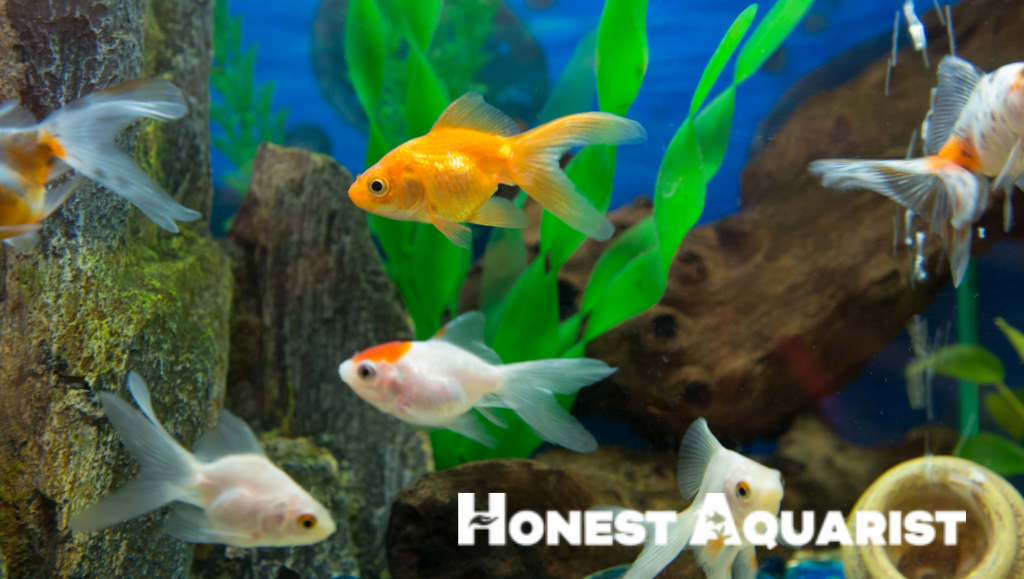

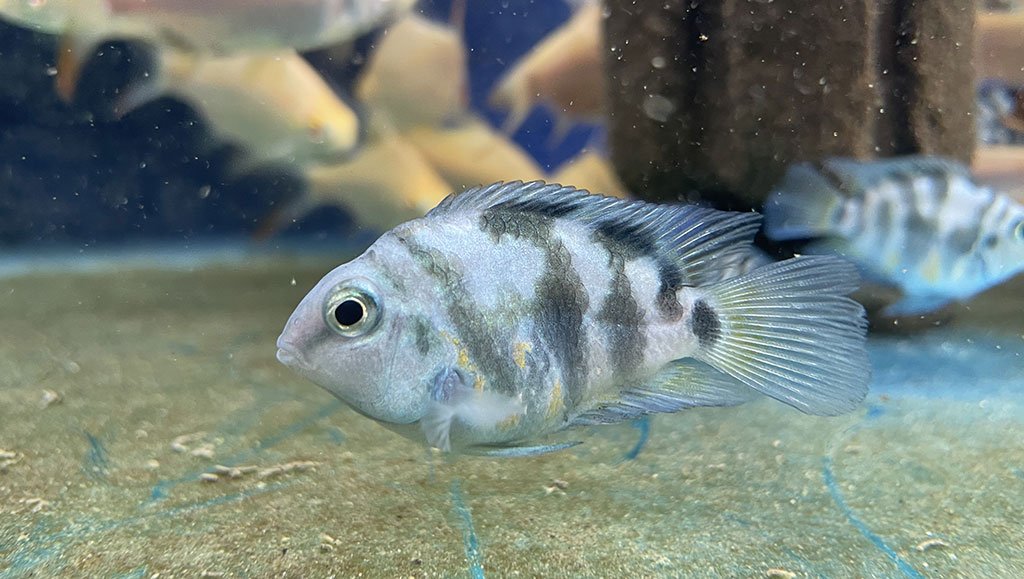
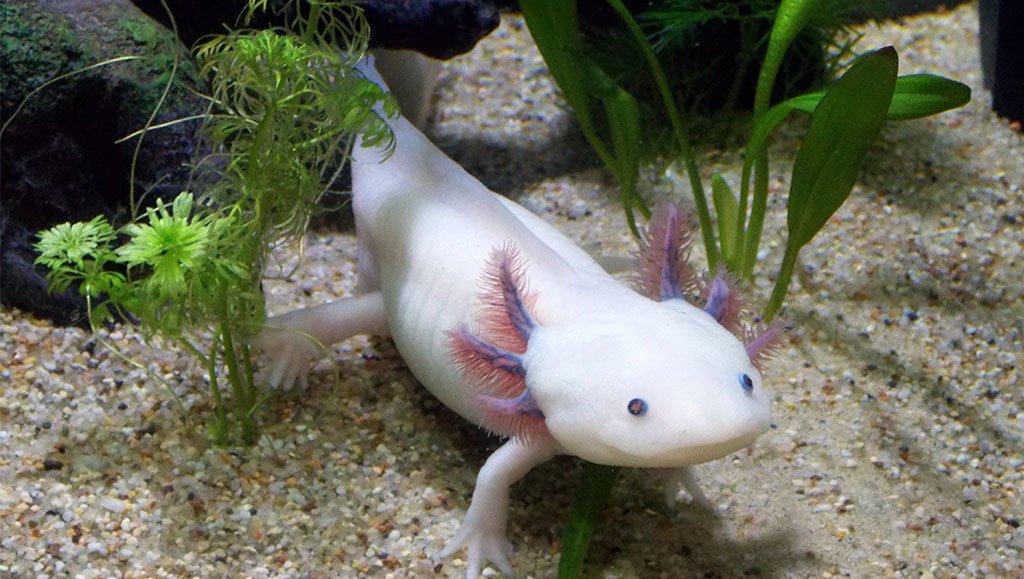

Good Day
I have just analyzed honestaquarist.com for its SEO Trend and saw that your website could use a boost.
We will improve your ranks organically and safely, using only state of the art AI and whitehat methods, while providing monthly reports and outstanding support.
More info:
https://www.digital-x-press.com/unbeatable-seo/
Regards
Mike Chapman
Digital X SEO Experts
Hey people!!!!!
Good mood and good luck to everyone!!!!!